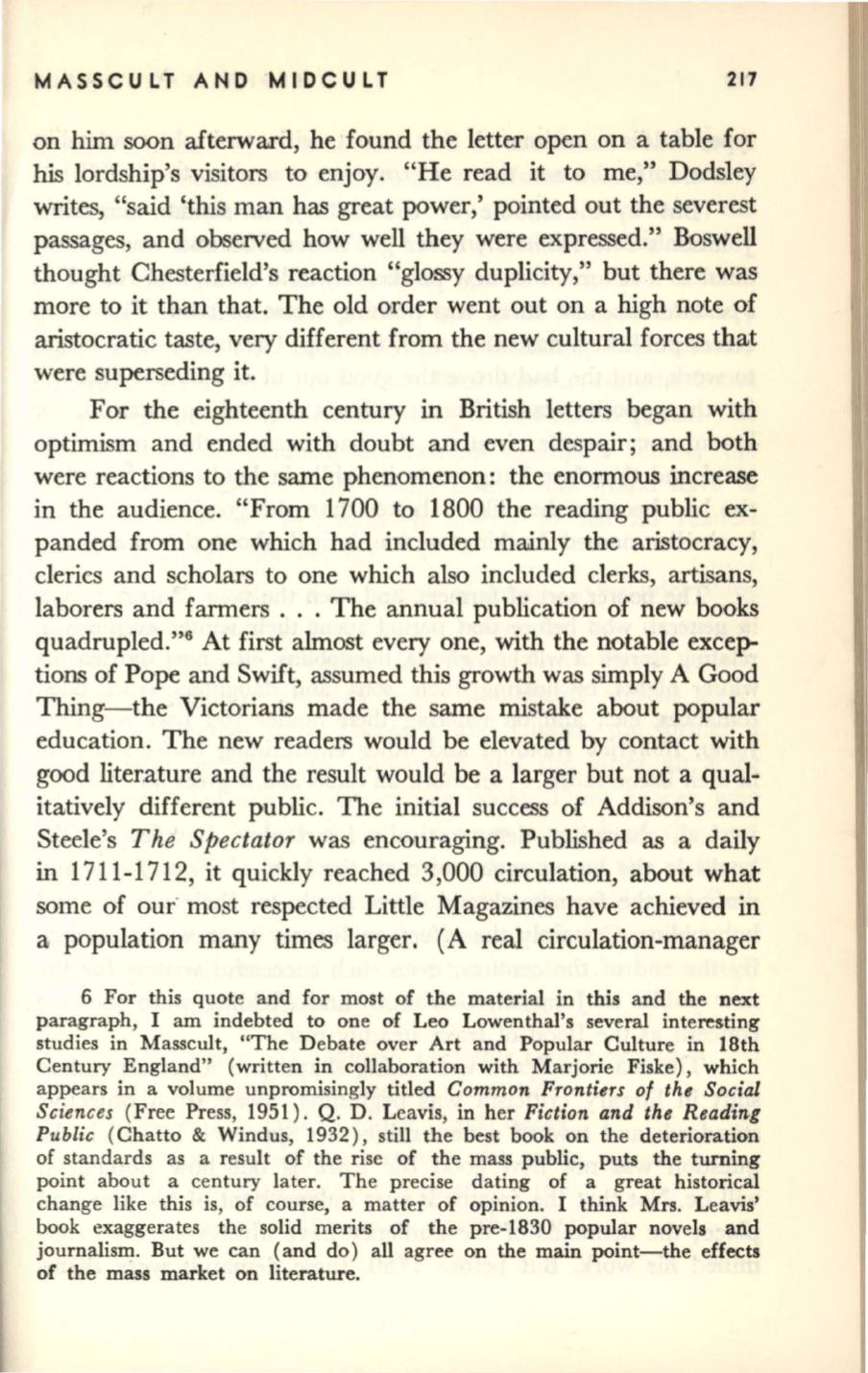
MASSCULT AND MIDCULT
217
on him soon afterward, he found the letter open on a table for
his lordship's visitors to enjoy. "He read it to me," Dodsley
writes, "said 'this man has great power,' pointed out the severest
passages, and observed how well they were expressed." Boswell
thought Chesterfield's reaction "glossy duplicity," but there was
more to it than that. The old order went out on a high note of
aristocratic taste, very different from the new cultural forces that
were superseding it.
For the eighteenth century in British letters began with
optimism and ended with doubt and even despair; and both
were reactions to the same phenomenon: the enormous increase
in the audience. "From 1700 to 1800 the reading public ex–
panded from one which had included mainly the aristocracy,
clerics and scholars to one which also included clerks, artisans,
laborers and farmers ... The annual publication of new books
quadrupled."6 At first almost every one, with the notable excep–
tions of Pope and Swift, assumed this growth was simply A Good
Thing-the Victorians made the same mistake about popular
education. The new readers would
be
elevated by contact with
good literature and the result would be a larger but not a qual–
itatively different public. The initial success of Addison's and
Steele's
The Spectator
was encouraging. Published as a daily
in 1711-1712, it quickly reached 3,000 circulation, about what
some of our' most respected Little Magazines have achieved in
a population many times larger. (A real circulation-manager
6 For this quote and for most of the material in this and the next
paragraph, I am indebted to one of Leo Lowenthal's several interesting
studies in Masscult, "The Debate over Art and Popular Culture in 18th
Century England" (written in collaboration with Marjorie Fiske), which
appears in a volume unpromisingly titled
Common Frontiers of the Social
Sciences
(Free Press, 1951) . Q . D. Leavis, in her
Fiction and the Reading
Public
(Chatto
&
Windus, 1932), still the best book on the deterioration
of standards as a result of the rise of the mass public, puts the turning
point about a century later. The precise dating of a great historical
change like this is, of course, a matter of opinion. I think Mrs. Leavis'
book exaggerates the solid merits of the pre-1830 popular novels and
journalism. But we can (and do) all agree on the main point-the effects
of the mass market on literature.


